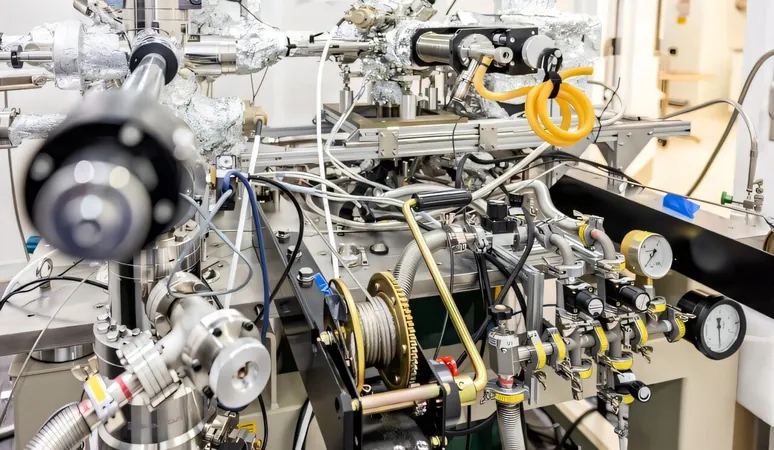
Breakthrough Discovery: A New Kind of Superconductor Could Revolutionize Energy Efficiency!
2024-11-13
Author: Kai
Introduction
A groundbreaking study led by a team from Yale University has unveiled compelling evidence for a revolutionary type of superconducting material, paving the way for innovative approaches to achieve superconductivity—the miraculous ability for electricity to flow without any energy loss.
Link to Electronic Nematicity
This compelling discovery not only strengthens a longstanding theory regarding superconductivity but also suggests that it might be fundamentally linked to a phenomenon known as electronic nematicity. In simpler terms, electronic nematicity is a state of matter where particles lose their symmetrical arrangement, leading to fascinating new properties.
Research Focus
Researchers focused on iron selenide crystals infused with sulfur, where iron atoms are arranged in a neat grid structure. At room temperature, electrons in these iron atoms are indifferent to directional movement, but as temperatures drop, they can transition into a 'nematic' phase. In this phase, electrons begin to show a preference for moving in a specific direction—a pivotal behavior that could unlock advanced superconductivity.
Nematic Fluctuation
The concept of nematic fluctuation comes into play here, where electrons alternate between preferred moving directions. For years, scientists have sought to demonstrate the influence of these fluctuations on superconductivity, but success has been elusive. However, this latest research collaboration, spearheaded by Professor Eduardo H. da Silva Neto from Yale, offers a promising breakthrough.
Publication and Findings
Published in the prestigious journal Nature Physics, the study highlights the ideal properties of iron selenide materials that present superconductivity without the complications of magnetism, which often obscures research efforts. According to da Silva Neto, 'These materials allow us to explore the relationship between superconductivity and nematic fluctuations in a clearer manner.'
Experimental Methodology
To conduct their research, the team meticulously cooled iron-based materials to frigid temperatures below 500 millikelvins, a process that took several days. Using a state-of-the-art scanning tunneling microscope (STM), they visualized the atomic-level quantum states of the electrons, revealing a 'superconducting gap'—an indicator of superconductivity driven by electronic nematicity.
Challenges and Future Research
'Proving this concept has been difficult because it requires precise measurements at extremely low temperatures,' noted da Silva Neto. As the study progresses, the researchers aim to investigate further by altering the sulfur content in the materials and observing how these changes affect superconductivity.
Significance of the Study
This significant step in superconductivity research not only enhances our understanding of quantum materials but also holds potential implications for the future of energy transmission and technology. If successful, this could lead to more efficient power grids, advanced electronic devices, and groundbreaking technologies we can scarcely imagine today.
Conclusion
In addition to Professor da Silva Neto, the study involved Yale graduate students Pranab Kumar Nag and Kirsty Scott, among other co-authors from esteemed institutions, including the University of California, Davis, and several Brazilian universities. Stay tuned as this research unfolds—who knows what kind of electric revolution lies ahead!





 Brasil (PT)
Brasil (PT)
 Canada (EN)
Canada (EN)
 Chile (ES)
Chile (ES)
 España (ES)
España (ES)
 France (FR)
France (FR)
 Hong Kong (EN)
Hong Kong (EN)
 Italia (IT)
Italia (IT)
 日本 (JA)
日本 (JA)
 Magyarország (HU)
Magyarország (HU)
 Norge (NO)
Norge (NO)
 Polska (PL)
Polska (PL)
 Schweiz (DE)
Schweiz (DE)
 Singapore (EN)
Singapore (EN)
 Sverige (SV)
Sverige (SV)
 Suomi (FI)
Suomi (FI)
 Türkiye (TR)
Türkiye (TR)